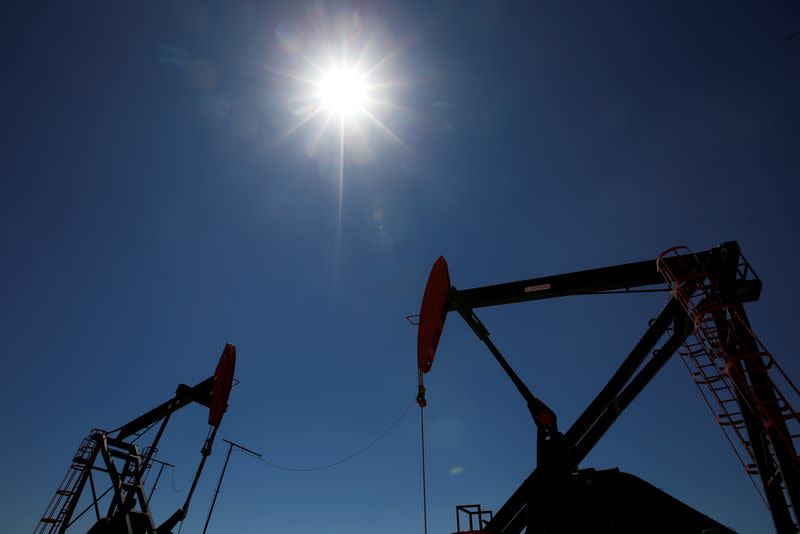Oil prices fell as much as 3% on Wednesday after the Federal Reserve imposed in its biggest U.S. rate since the 1990s, adding to fears that the central bank will push the world’s largest economy into a recession in its bid to fight inflation ramping at 40-year highs.

Source: Reuters
President Joe Biden added to oil market jitters by calling on U.S. refining companies to produce more fuels, saying they were duty-bound to help alleviate the burden of record high gasoline and diesel prices on Americans.
“At a time of war – historically high refinery profit margins being passed directly onto American families are not acceptable,” Biden said, referring to the Russia-Ukraine crisis, in his letter to refiners, including those belonging to oil majors such as Exxon Mobil (NYSE:XOM) and Chevron (NYSE:CVX).
″[C]ompanies must take immediate actions to increase the supply of gasoline, diesel, and other refined product,” the letter, reproduced by CNBC, said.
Biden’s call to refiners came as sky-high energy costs add to inflationary concerns across the economy. The president has indicated lately that a “windfall profits tax” might be levied on refiners after the national average for a gallon of gasoline crossed $5 over the weekend for the first time ever, according to the American Automobile Association.
The national average now stands at $5.014 a gallon, some 54 cents more than a month ago, and $1.94 above a year ago.
Adding to the weight on oil was U.S. crude production, which hit 12 million barrels per day last week, for the first time since April 2020, the Energy Information Administration said in its weekly industry report on Wednesday. It was a sign that oil at $120 a barrel was finally spurring higher output, although at a slower pace than needed to tamp down record high fuel prices.
The Fed, on its part, announced a 75-basis point, or a three-quarter percentage point, increase for the third US interest rate hike since the outbreak of the coronavirus pandemic two years ago. Historical data showed that a 75-basis point rate hike or more has occurred only 28 times since the 1970s. The last time it happened was in November 1994, when the Fed hiked rates multiple times in one year in a move to stave off inflation. The Fed move exacerbated worries that it was trying to induce a recession to fight inflation, something that the central bank’s chairman Jerome Powell denied on Wednesday.
Responding to the myriad of negative factors, New York-traded West Texas Intermediate, the benchmark for U.S. crude, settled down $3.62, or 3%, at $115.31 barrel.
London-traded Brent crude, the global oil benchmark, settled down $2.66, or 2.2%, at $118.51 a barrel.
Crude prices hit 14-week highs on Tuesday, with WTI soaring to almost $124 a barrel and Brent breaching $125 after the Organization of the Petroleum Exporting Countries stuck with its forecast that world oil demand will exceed pre-pandemic levels in 2022. This was in spite of OPEC admitting that Russia’s invasion of Ukraine and developments around the coronavirus pandemic pose a considerable risk.
From then, prices have been in the red as concerns grew about U.S. inflation ripping at its highest since 1981 and the likelihood of a 75-basis point rate hike by the Fed, which materialized at the conclusion of the central bank’s monthly policy meeting Wednesday.
The US economy expanded by 5.7% in 2021, also growing at its fastest pace in four decades after a 3.5% tumble in 2020 due to complications caused by the coronavirus pandemic.
Since the start of this year though, the economy has been on a weaker trajectory, posting a negative growth of 1.4% for the first quarter. Technically, the economy needs just two straight quarters of negative growth to be in recession, with the first quarter already being in the red.

